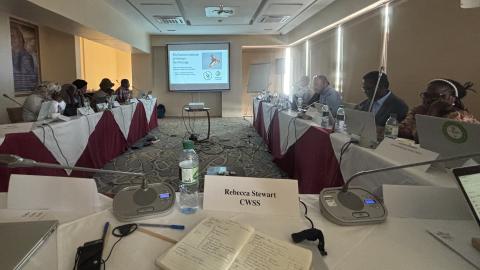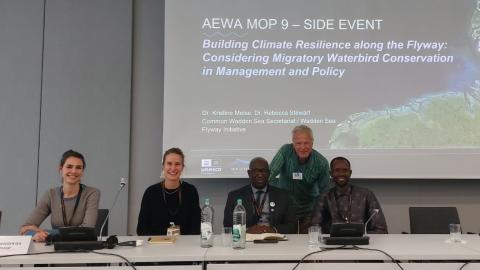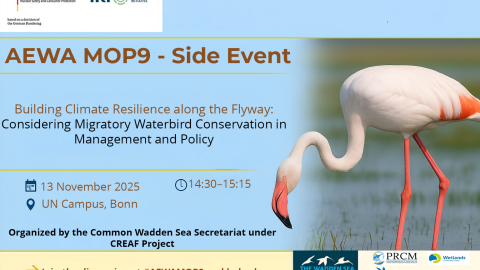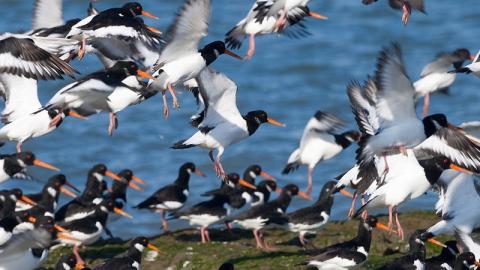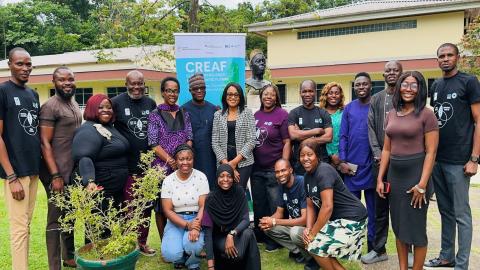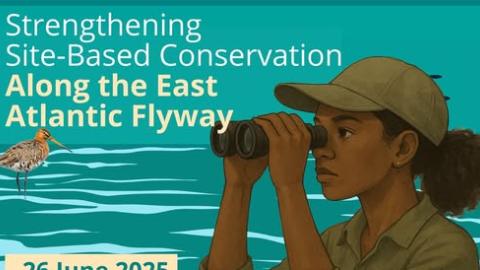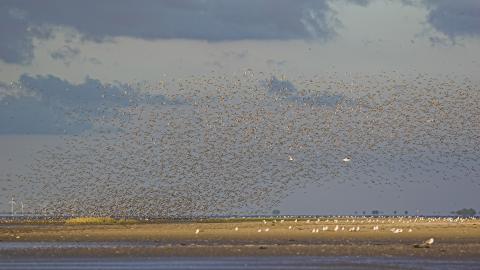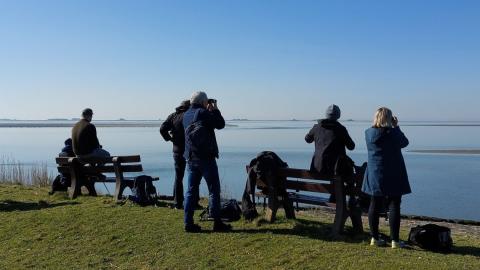Wadden Sea Flyway Initiative (WSFI)
The Wadden Sea is a key stopover site for migratory waterbirds along the East Atlantic Flyway. In recognition of the responsibility that arises from this, the three Wadden Sea states Denmark, Germany and the Netherlands established the Wadden Sea Flyway Initiative in 2012, with the vision that:
“Migratory birds find lasting refuge along the East Atlantic Flyway from northern breeding areas to their key Wadden Sea stopover and to the African coastline, and inspire and connect people for future generations”
In close collaboration with local, regional, and international partners, the Wadden Sea Flyway Initiative (WSFI) participates in global efforts to strengthen the conservation of migratory waterbirds. With its monitoring programme and the capacity building and management programme, the WSFI aims to address the following key objectives. For more information on specific target actions, please click on the respective objective:
Strengthen cooperation among WSFI partners.
- 1.1 Strengthen and maintain effective cooperation with WSFI partners
1
Strengthen the integrated flyway monitoring programme to assess the status of waterbirds and their sites along the East Atlantic Flyway, signal pressures and evaluate impacts and conservation measures.
- 2.1 Monitor the status of waterbirds and their sites and habitats along the East Atlantic Flyway
- 2.2 Determine the (changing) status of waterbirds and their sites and habitats along the East Atlantic Flyway
2
Establish an integrated flyway research programme to identify causes or mechanisms behind changes in the status of waterbirds and their sites along the East Atlantic Flyway and recommend evidence-based management solutions to alleviate them.
- 3.1 Investigate the causes and mechanisms behind changes in status of waterbirds and impacts on their habitats along the EAF, in particular considering the impact of climate change
- 3.2 Improve recommendations for evidence-based solutions for adaptive management of migratory waterbirds and their habitats
- 3.3 Exchange of knowledge and expertise that benefit flyway conservation and thus the connectivity between sites along the East Atlantic Flyway
3
Promote wise use of coastal resources and conservation of migratory waterbirds of the East Atlantic Flyway, especially measures to improve their conservation status.
- 4.1 Improved management of key coastal sites for migratory waterbirds along the flyway
- 4.2 Improved management of breeding sites for migratory waders in the Arctic
- 4.3 Identify and support sustainable community-led initiatives, especially for livelihood improvements, at important sites along the flyway
- 4.4 Intensify collaborations among World Heritage sites
4
Strengthen capacity along the East Atlantic Flyway for conservation, management and monitoring of migratory waterbirds and their critical sites.
- 5.1 Develop an integrated capacity building programme for the East Atlantic Flyway
- 5.2 Implement an integrated capacity building programme for the East Atlantic Flyway
- 5.3 Strengthen the East Atlantic Flyway Coastal Waterbird Conservation Network
5
Strengthen policies and legislations for migratory waterbirds and coastal wetlands in countries along the East Atlantic Flyway.
- 6.1 Improved status of migratory waterbirds and their sites through advocacy interventions
- 6.2 Climate and biodiversity policies are streamlined, especially relating to the East Atlantic Flyway network of sites
- 6.3 Advocacy of the private sector and development institution
6
Build awareness of the East Atlantic Flyway, the values and connections of migratory waterbirds, and the importance of the flyway approach for nature conservation.
- 7.1 Enhanced awareness of the East Atlantic Flyway and the key threats for flyway conservation
- 7.2 Enhanced engagement of children and youth through a targeted education programme
- 7.3 Enhanced engagement of communities through local level actions and wetland centres

